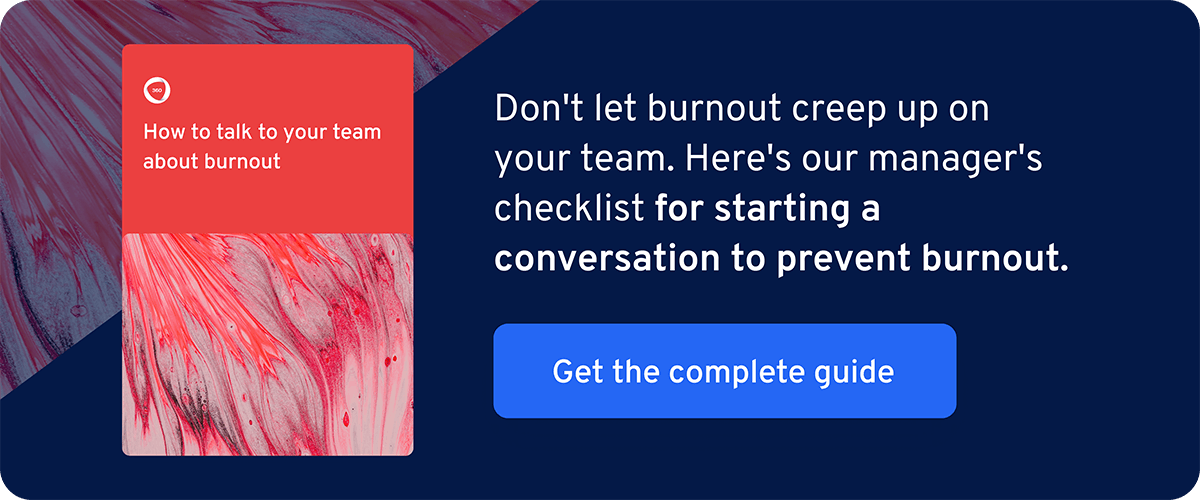
Your Employee Retention Management Plan Imploded in 2021. Here’s how to get it Back on Track
Employee retention planning has taken a backseat over the last year and a half. Instead, we all — understandably — went into survival mode and focused on micro short-term planning, if we did any planning at all.
During this time, the rate of employees leaving their jobs rose to a 20-year high, a phenomenon no one could have possibly predicted. It's not your fault you're in this situation, but you can't afford to keep losing employees.
Waiting any longer to formulate or reinstate a retention management plan will be costly. You probably already know it costs your company thousands of dollars every time an employee leaves. It also affects your entire workforce, because you lose vital institutional knowledge and spend critical time on your hiring and onboarding processes.
It’s time to get back on track by building a retention management plan that emphasizes ongoing, long-term development opportunities to help you reduce the number of employees leaving your organization. In this article, we’ll show you how.
1. Check your benefits and compensation
Over the past year, there hasn’t been much time to dive into benefits and compensation data, so it’s time to check and see whether your salaries and benefits are still competitive. Employees are more interested in benefits than before the pandemic started, so making adjustments now can help you retain your top talent.
A report from Care.com shows 98% of human resource and C-suite leaders in the U.S. are expanding benefits because of the lessons learned over the past year and a half. Follow their lead by conducting a salary review and do your best to make any needed adjustments to stay competitive.
Pay bumps aren’t always a possibility, especially in 2021. If you can’t offer your employees more money, you can get creative by giving them more flexibility and autonomy in how they organize their work. Studies show younger workers prefer flexible work options like working from home permanently or shifting to 4-day work weeks over higher salaries. This is a big part of our Your Life, Your Way principle.
Related: Why We Don't Negotiate Salaries at 360Learning
2. Work with employees to develop their career goals
There’s a good chance your employees’ career goals have recently changed — 1 in 5 workers completely changed their line of work between 2020 and 2021. Helping employees define and adjust their goals can have a positive impact on retention — according to McKinsey, making sure your employees' goals are defined can help increase their engagement and performance.
You may be able to get your employees to stay at your company longer if you work with them to plan and define long-term goals — even if those goals aren't immediately achievable at your company. It sounds counterintuitive, but younger workers are currently spending less than two years at one job, so don't be afraid to consider yourself a sort of stepping stone. If employees don't feel like you're providing the foundation for the future they want, they have no reason to stay. On the other hand, if they believe you'll help them reach their long-term goals, they may not be so eager to jump ship right away.
While goal-setting traditionally involves making sure your employees’ objectives align with your organization’s, dig deeper to find out what your employees really want. Coaxing out your people’s true career aspirations and working with them collaboratively to create that path doesn’t just help retain employees; it makes the time they spend at your company richer and more engaging.
3. Create training programs that help employees reach their goals
Once you’ve helped your employees nail down their goals, give them the right training opportunities to help them achieve those goals. We recently polled 600 American employees and found a high demand for workplace learning — your employees need regular training and development opportunities if you want them to stay.
To create suitable courses and programs, do a training needs analysis to find the gaps between your employees' skills to meet their goals and where they are now. Once you have that data, you can create personalized courses — optimized training designed for specific learning paths — which provide a better experience for your employees.
Over 60% of the employees we surveyed say they not only want training, but they also need it to be relevant and interesting — big surprise, right? One way to make your courses more engaging is to use active learning techniques where learners become participants, making learning feel a lot less like work and sparking higher engagement.
4. Prioritize one-on-one meetings to give people a voice
Start prioritizing one-on-one conversations with employees. Nearly half of employees don’t know what’s expected of them — this ambiguity hurts engagement and retention. Holding regular one-on-one with your employees provides a great opportunity to align expectations and uncover growth opportunities.
Giving your employees a chance to voice their opinions and feedback in an environment where they can open up gives your managers and leaders more valuable feedback and makes employees feel heard. Employees who believe their voice matters are twice as likely to believe there’s a path for them inside your company.
When holding your one-on-ones, make sure to ask your employees about their workload. Roles and responsibilities have shifted a lot during the pandemic, and there’s a good chance you have at least some employees who took on extra work last year. As a result, as many as 54% percent of employees feel overworked. It's essential to get ahead of burnout because burnt-out employees are over two times more likely to leave their current employer.
Hold tight and prioritize your teams
“The long-awaited September return to normal is not happening as expected,” says Constance Hunter, chief economist at KPMG. There is currently no predictable timeline for when the workplace will get back to some semblance of normality, and no one has a clue when the final “new normal” will land. As it stands now, the U.S. is quickly becoming the “I don’t know” economy.
The only thing the experts seem to agree on is that it’s going to take a while for our current situation to sort itself out. In this time of turbulence, double down on giving your teams the support they need. Businesses are only as good as the people who run them, so even if the world is a giant question mark, you're winning if you can make your workplace a safe, comfortable, engaging place for every single one of your teams.
Chances are, you’ve surprised yourself with just how quickly and successfully you’ve been able to adjust to the disruption and confusion of the pandemic era. The best thing you can do for the foreseeable future is keep on truckin’ with that same flexibility and speed you’ve developed over the last year, and find new ways to support your teams with the right focus on employee retention.
Another key step in retaining your top talent? Knowing how to talk about burnout. Learn more with our practical guide: How to talk to your team about burnout.


